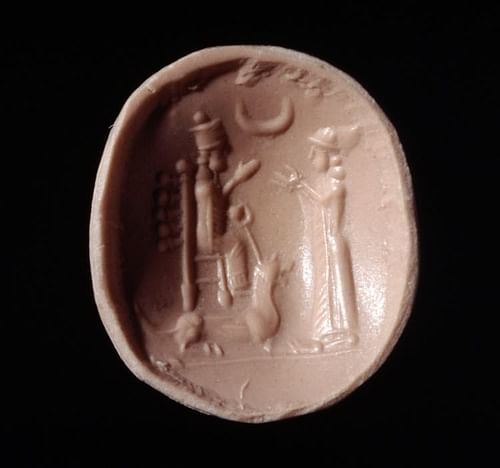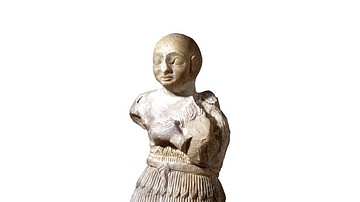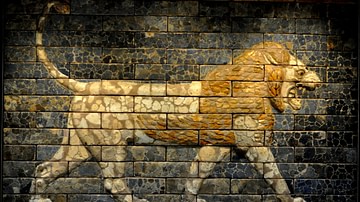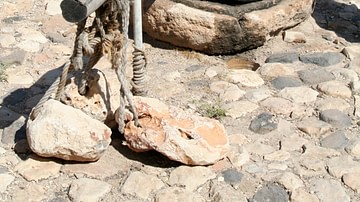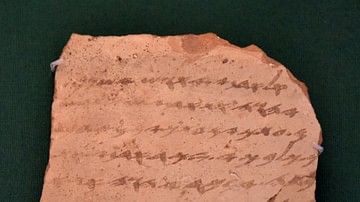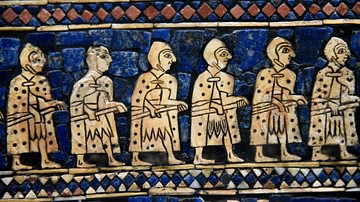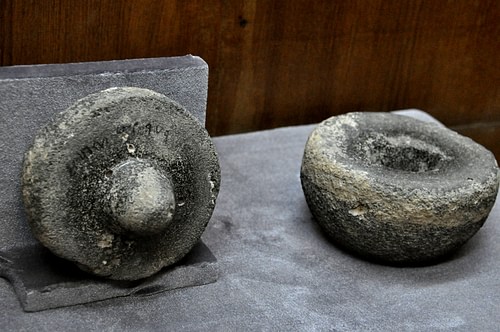
Mesopotamian Science and Technology developed during the Uruk Period (4100-2900 BCE) and Early Dynastic Period (2900-1750 BCE) of the Sumerian culture of southern Mesopotamia. The foundation of future Mesopotamian advances in scientific/technological progress was laid by the Sumerians who first explored the practice of the scientific hypothesis, engaged in technological innovation, and created the written word, developed mathematics, astronomy and astrology, and even fashioned the concept of time itself. Some of the most important inventions of the Sumerians were:
- The Wheel
- The Sail
- Writing
- The Corbeled Arch/True Arch
- Irrigation and Farming Implements
- Cities
- Maps
- Mathematics
- Time and Clocks
- Astronomy and Astrology
- Medicinal Drugs and Surgery
The Sumerians created these things in an effort to improve their lives but must have arrived at the need for them through observation of an existing problem and proposing a solution which was then tested. Some scholars object to the use of the terms 'science' or 'scientific method' in referring to Sumerian/Mesopotamian inventions and innovations because religion played such an important role in the people's lives and the will of the gods was considered the final and only factor in how the universe and life on earth operated.
Even so, 'scientific method' is the most precise term for how the people proceeded because the Mesopotamians, while keeping to a theistic concept of life, allowed themselves to imagine a world which operated according to certain natural laws, and in attempting to find out how, they laid the foundation for scientific inquiry which would later be developed by Egyptian and then Greek thinkers and would carry on to the present day.
Underlying Form
This is not to say the people of ancient Mesopotamia engaged in the same sort of scientific inquiry, in the same way, one would in the present day, and those who object to the use of the word 'science' or the term 'scientific method' regarding Mesopotamia have a valid point. The Mesopotamians believed the gods had created order out of chaos and had then created human beings as their co-workers to maintain that order. Since the gods were the root cause of all things, seen or unseen, the goal of the various innovations or inventions seems to have been to understand how this order functioned and to labor with the gods to preserve it.
This preservation took the form of improving upon the basic 'stuff' of life the people had been given and this required the people's observation, forming some sort of hypothesis of how an aspect of life worked, the trial of that hypothesis, and a conclusion. Although this follows the essential form of 'scientific method' in the present day, the final reason for any observable phenomena was the gods and so instead of asking why something functioned as it did, the question would be how it functioned and ways to improve upon it in keeping with humanity's role as co-workers with the gods.
An ancient Sumerian farmer would not ask “Why are my fields barren when my neighbor's fields are fertile?” because the obvious answer was that it was the will of the gods. The question would be “How do I influence the will of the gods to make my fields fertile?” It could be that the gods simply required greater acts of devotion from that farmer, but it could also be that the gods wanted the person to do something he or she would not have done otherwise and so purposefully handed them this challenge so they would invent the system of irrigation and more people than just that one farmer would now have water for their land.
Necessity seems indeed to have been the mother of invention, but these inventions were all in keeping with the underlying form of the gods' ordered world. Things were as they were, and one's task was to take up the challenges handed down by the gods, improve what could be improved, and accept what one could not change.
The Wheel, the Sail, & Writing
The two Mesopotamian inventions considered most important are writing and the wheel. Although some scholars contend that the wheel originated in Central Asia (because the oldest wheel in the world was found there), it is generally accepted that the concept originated in Sumer because of the production of ceramics. The wheel is thought to have developed from a need to make better, and more, pottery in less time. The potter's wheel was then adapted for the creation of carts, and later chariots, for transporting goods and simply moving more quickly from one place to another.
The same paradigm is thought to apply to the invention of the sail which most likely began simply through the observation of the wind's effect on a piece of cloth, possibly when it was drying after being washed. A larger cloth, it would be reasoned, would catch more wind and could help one navigate the rivers more easily as well as faster. This would have been especially important in trade, since waterways were the preferred route but it was more difficult and slower-going making one's way upriver against the current than down. The sail would have remedied this problem by providing wind power to supplement or replace rowers.
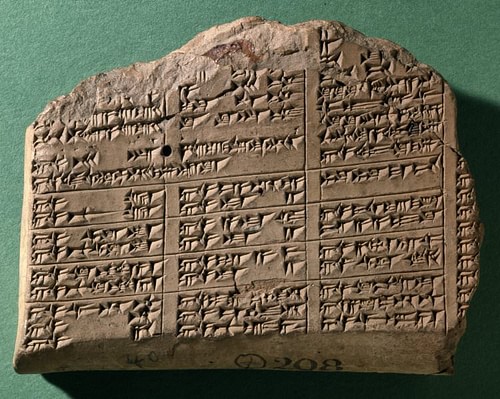
Writing was invented c. 3600-3500 BCE as a means of conveying information over long distances in trade. The earliest writing was rudimentary pictographs which could convey information along the lines of “two sheep – temple at Uruk” but could not clarify what the purpose of the two sheep was supposed to be, whether they were to be brought to or from the temple, whether they were dead or alive. Scholar Samuel Noah Kramer comments:
It was probably…about five thousand years ago that the Sumerians, as a result of their economic and administrative needs, came upon the idea of writing on clay. Their first attempts were crude and pictographic; they could be used only for the simplest administrative notations. But in the centuries that followed, the Sumerian scribes and teachers gradually so modified and molded their system of writing that it completely lost its pictographic character and became a highly conventionalized and purely phonetic system of writing. In the second half of the third millennium BCE, the Sumerian writing technique had become sufficiently plastic and flexible to express without difficulty the most complicated historical and literary compositions. (History Begins At Sumer, xxi)
This writing system is known as cuneiform, from the Latin cuneus for “wedge”, because words were written by pressing a wedge-like stylus into moist clay which was then dried. The Sumerians themselves did not call their writing cuneiform – this is a modern-day designation – nor did any of the other civilizations which later used it. Cuneiform writing spread from Sumer and was eventually used by the other great civilizations of Mesopotamia and Anatolia, including:
As early as 3200 BCE, this writing system was already advanced enough to require a kind of dictionary – known as the lexical texts – which defined certain symbols as words and, eventually, gave the translations of the symbol-word in Sumerian, Akkadian, and Hittite. Cuneiform was used to create all of the same kinds of documents one could think of in the present day, from personal letters to business agreements, land deeds, receipts, bills, legal notices, histories, and literature. The Epic of Gilgamesh was written in cuneiform as were the hymns of Enheduanna and the masterpieces of the genre of Mesopotamian Naru Literature. The writing system remained in use until it was replaced by alphabetic script sometime c. 100 BCE.
Agriculture, Architecture, & the State
In agriculture, the Sumerians created irrigation practices, the seed-drill, the plow, and the pickaxe and seem to have also invented the device known as the Archimedes' Screw long before the Greeks. The Archimedes' Screw is a device which draws water from lower to higher levels (such as groundwater to irrigation ditches). Brewing and the brewer's vat also developed from agricultural practices as beer is thought to have been discovered through fermented grains. The Sumerians also invented a governmental bureaucracy, which oversaw and regulated production and distribution of crops. Kramer notes:
While the Sumerians set a high value on the individual and his achievement, there was one overriding factor which fostered a strong spirit of cooperation among individuals and communities alike: the complete dependence of Sumer on irrigation for its well-being – indeed, for its very existence. Irrigation is a complicated process requiring communal effort and organization. Canals had to be dug and kept in constant repair. The water had to be divided equitably among all concerned. To ensure this, a power stronger than the individual landowner or even the single community was mandatory: hence, the growth of governmental institutions and the rise of the Sumerian state. (Sumerians, 5)
The concept of the state grew out of small communal organizations known as “households” whose members were not all blood relatives but shared a common interest and, usually, some amount of land. A strict hierarchy governed the households with a “big man” (known as an ensi and later a lugal) at the top, his wife below him, and others following down to unskilled laborers. The initial households eventually developed into the ruling houses as cities developed and the concept of kingship emerged.
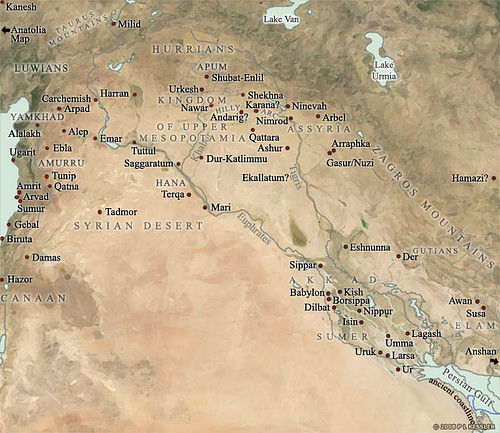
The cities were centered on the temple complex and these complexes called for the development of monumental architecture to honor the gods who would live in them. Each city had its own temple and its own god, and each needed their temple complex to be more impressive than any others. The temple aside, though, cities required buildings with doorways, hallways, and rooms and some means had to be found to fashion these. Scholar Stephen Bertman explains how this challenge was met:
The engineering solution proved to be the arch, a Sumerian invention of the fourth millennium BCE. The arch created an opening while at the same time bearing weight. Its secret was to transfer that weight outward and then downward into the ground, rather than bearing it solely upon itself. By building a series of such arches back to back, engineers were able to construct vaults that served as tunnels. In addition to forming passageways, the arch was a strong and efficient way of supporting a superstructure: because of its openness, it required less brick or stone than a wall of similar size carrying a similar weight. (190)
The first of these was the corbel arch (constructed of “steps” which are placed in a series gradually narrowing and closing at the top) which later developed into the true arch. The true and corbeled arch would be used by other civilizations from the Egyptians to the Greeks and, most famously, by Rome.
As the cities grew, so did trade and maps were created to gauge distance and direction between the city-states of Sumer and those of northern Mesopotamia as well as distant lands such as Egypt and India. Maps were made either by making impressions on moist clay – along the lines of cuneiform – or by carving images on other material. Distances were gauged using another Mesopotamian development: mathematics.
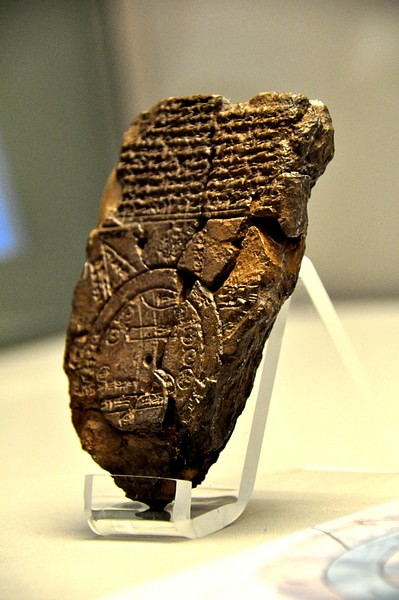
Mathematics, Time, & Astronomy/Astrology
Mathematics probably developed from trade as a necessity in bookkeeping but was clearly an important aspect of architecture in planning and constructing cities and their temples. In the course of building these great cities and grand structures, the Sumerians seem to have invented the mathematical paradigm of the Pythagorean Theorem centuries before Pythagoras lived. This is hardly surprising since Mesopotamian cities were well known as great centers of learning and culture – most notably Babylon from c. 1792 - c. 600 BCE where the Greek philosopher Thales of Miletus was said to have studied.
The Mesopotamians developed a highly sophisticated mathematical system with a sexagesimal place-notation (a base of 60 whereas the present-day base is 10). This system included addition, subtraction, multiplication, division, algebra, geometry, reciprocals, squares, and quadratic equations. The sexagesimal base inspired them to create time based on the concept of 60, and so an hour was defined as 60 minutes and a minute of 60 seconds. Time was measured by a sundial or a waterclock, and the period of the sun's rising to setting and rising again was divided into periods of 12 for daylight and 12 for darkness, creating the 24-hour day.
These days were then calculated to make up a year and, in order to know what times of the year were optimal for what activities, astronomy developed to chart the stars and tell the seasons and this led to the creation of the calendar. The Mesopotamians used a lunisolar calendar in which each month begins with the first sighting of the crescent moon. Initial attempts to define a year fell short of a true solar year but, by the 17th century BCE, astronomy had developed to the point where a year, as well as other cycles of time, were well defined.
The charting of the stars was interpreted, like everything else, as acting in accord with the will of the gods and so it was only natural that, eventually, diviners would come to interpret certain astronomical phenomena as messages from the gods – and so astrology was created. Divination had been practiced in Mesopotamia prior to the creation of astrology through the sacrifice of animals and interpreting their entrails or similar methods. Astrology, however, came to dominate divination because the signs were seen as a clearer message directly from the gods regarding a nation's or an individual's future and even character. The signs of the zodiac, and determining a person's basic characteristic and short-and-long-term fate, were concepts first created in Mesopotamia before being developed later by the Egyptians and the Greeks.
Medicine & Physicians
This same model applies to healthcare in that many of the practices associated with Egypt and Greece originated in Mesopotamia. The Sumerian goddess of health and healing was Gula (later known in other regions as Ninkarrak and Ninisinna) often depicted in the presence of her dog as dogs were also associated with healing, health, and protection. Along with her dog, Gula cared for the people with the assistance of her consort Pabilsag, her daughter Gunurra, and her two sons Damu and Ninazu.
Ninazu was associated with daily health but also with death and dying in that one who passed on found life in the next world. Death was not considered an end to life but a transition although, still, people preferred to put it off as long as possible. Ninazu's symbol was the rod entwined with serpents – as serpents represented transformation either from sickness to health or from life to afterlife – and would later evolve into the caduceus in Greece which, today, is the symbol of the medical profession.
There were two types of doctors in Mesopotamia:
- Asu – a medical practitioner who prescribed various treatments for illness or injury
- Asipu – a holistic healer who relied on magical spells, amulets, and incantations
Both of these professionals were regarded with equal respect and, in some cases, worked together. Women as well as men could be doctors, although female physicians were rare.
Mesopotamian medical texts list diagnoses and prescriptions as well as surgical techniques and methods for setting broken bones. Illness and injury was thought to be the result of sin which had caused the person to become imbalanced and angered the gods. One of the responsibilities of the doctor, therefore, was to have the patient confess to any wrong-doing and promise to do better in the future. The doctor would then prescribe a course of treatment which would bring the patient back into balance and please the gods who would then “remove their hand” from the person and bring them back to health.
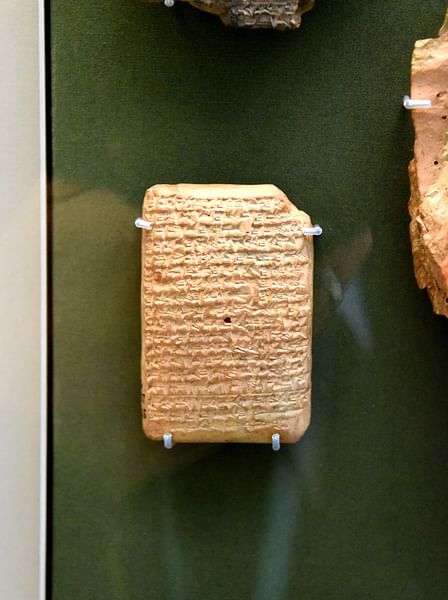
The patient's confession corresponds to the later Greek practice, suggested by Hippocrates, that a doctor should begin treatment by asking the patient what he or she has been doing which may have caused the injury or illness, known in the modern-day as a physician taking a patient's history. Doctors performed surgery regularly, understood that cleanliness and washing their hands improved a patient's health (although they had no knowledge of germs), and recognized the importance of a steady pulse and other signs of general well-being. They also served as sex therapists, marriage counselors, and exorcists.
Conclusion
Mesopotamian science and technology informed the later disciplines of other civilizations which developed them further. Scholar Paul Kriwaczek sums up the importance of their contributions:
Most of the basic technology that supported human life until industrial production began to take over our world a bare two centuries ago, was first devised at this time and in this part of the world: at home the beer-brewer's vat, the potter's kiln and the textile loom; in the fields the plough, the seed-drill and the farm cart; on the rivers and canals the wind-vane and the sailing boat; in music the harp, lyre and lute; in building technology fired bricks, the vault and the true arch. (47)
Samuel Noah Kramer, in his iconic work History Begins at Sumer, explores “39 Firsts” – thirty-nine aspects of civilization – many of which were later attributed to Greek inventors - which first appeared in Sumer during the Uruk and Early Dynastic Period of Mesopotamia. These advances in culture, science, and technology still inform the world of the present day.
